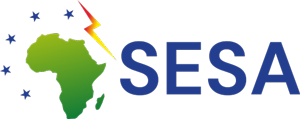D3.2 Tech and functional requirements
D3.2 Tech and functional requirements
Authors:
TECNALIA: Amaia González Garrido, Eduardo García, Daniel Valencia Caballero, Elena Turienzo, Ander Zubiria Gómez, Ana Huidobro;
LEITAT: Natalia Rey, Eduard Borras, Daniele Molognoni;
Going Green: Chikondi Khonje;
Make It Green: Martin Karlsson;
RISE: Susanne Paulrud, Kent Davidsson
Deliverable D3.2 provides a guideline of the desired functional requirements related to the main energy technologies that could possibly be deployed in the SESA Living Labs, with special attention to the innovation degree, technology costs, expected performance, and their local end-users, covering households and rural communities, small businesses, tertiary sector, municipalities, the fishing and agricultural sector, educational and healthcare facilities, and e-mobility companies. The targeted audience of this deliverable, behind the SESA project, are the responsible entities of the Living Labs and project development partners, who will drive the implementation plans, and are responsible to select the appropriate technologies, systems, or solutions. Beside this primary target audience, the document can be of interest also for public and private sector professionals, such as equipment providers, project developers and local authorities beyond the SESA project. The ‘energy innovations’ (energy technologies of interest) covered in this Deliverable D3.2 have been specially selected from the draft implementation plans and actions which are planned to be deployed in the SESA Living Labs, including: solar photovoltaics, smart mini/microgrids, electric mobility, second life EV batteries, biomass to biogas (biodigester), and waste to energy for cooking (BioCooker), as well as the transversal topic of climate proofing.






Recent Comments